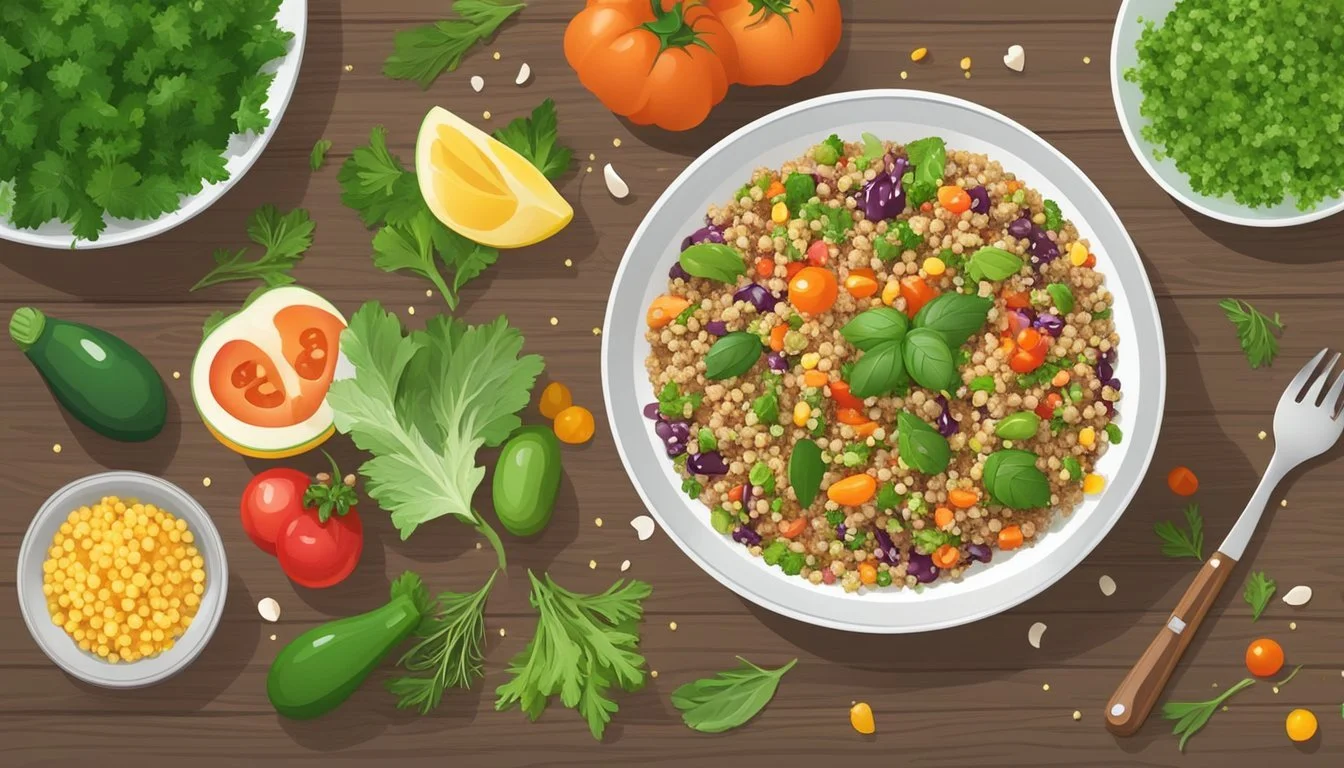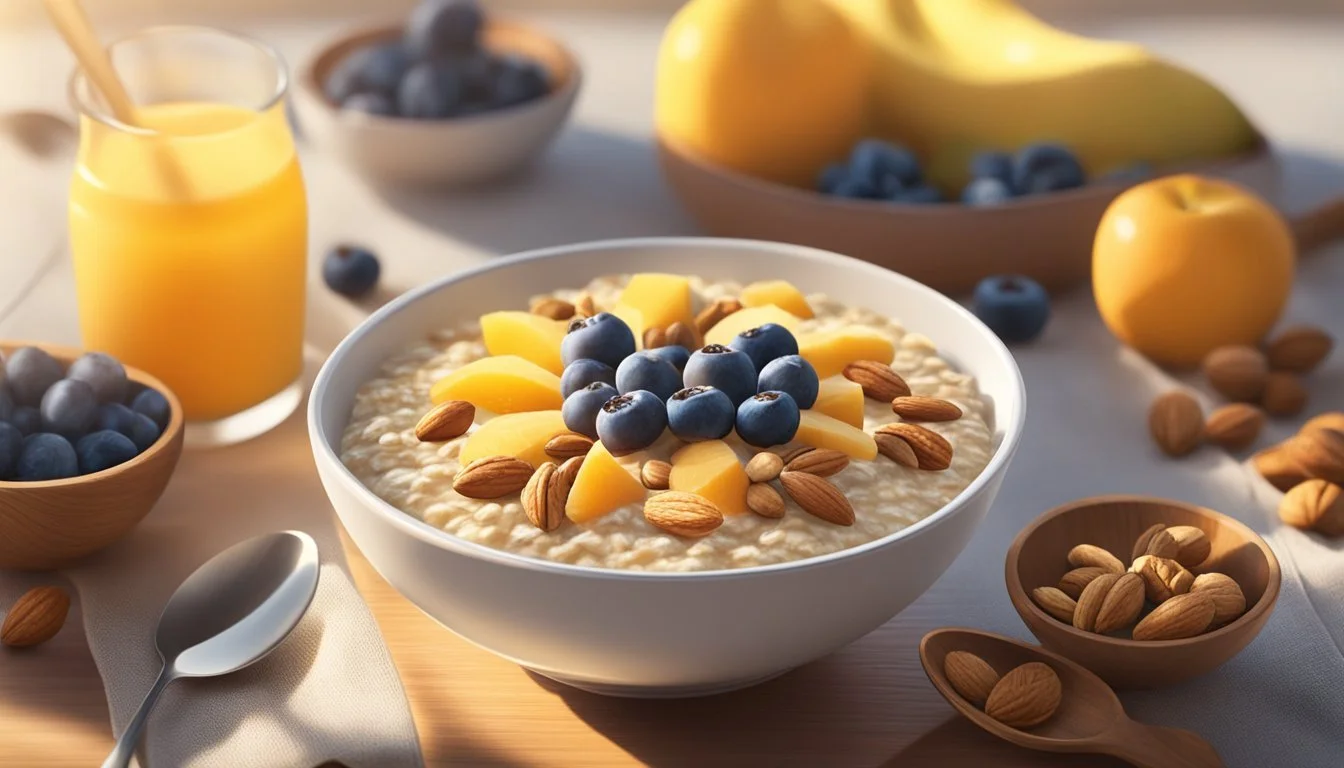Exploring Healthy Choices: What Makes Food Good for Class 5 Students
Eating the right foods is essential for maintaining good health, especially for young students in class 5. Learning about what constitutes good food helps children make better dietary choices that will positively impact their growth and academic performance
Good food includes a balance of nutrients that support overall physical and mental well-being. Understanding the food groups and their respective roles can guide students to create a varied and balanced diet. Through this article, readers will explore the basics of nutritious eating, emphasizing foods that should be part of a daily diet for class 5 students.
1) Quinoa Salad
Quinoa salad is a nutritious and versatile dish, perfect for class 5 meals. Quinoa, a gluten-free whole grain, is packed with protein, fiber, and various essential nutrients. It serves as an excellent base for salads, offering a nutty flavor and fluffy texture.
This salad can include a variety of colorful vegetables. Common additions are chopped cucumbers, bell peppers, onions, and cherry tomatoes. These vegetables not only enhance the flavor but also provide essential vitamins and minerals.
Chickpeas are often added to quinoa salads. They are a great source of protein and fiber. Combined with quinoa, they make the salad more filling and nutritious.
A simple dressing of olive oil, lemon juice, and vinegar brings the ingredients together. Fresh herbs like parsley or mint can add a refreshing taste. These elements make the salad vibrant and flavorful.
Quinoa salad can be served chilled or at room temperature. It's a perfect option for school lunches or as a side dish. This salad is not only healthy but also easy to prepare.
2) Greek Yogurt with Berries
Greek yogurt with berries is a nutritious and delicious option for a meal or snack. It combines the creamy texture of Greek yogurt with the natural sweetness of fresh berries. This simple dish offers several health benefits and can be enjoyed by people of all ages.
Greek yogurt is high in protein, which helps in building and repairing tissues. It is also rich in calcium, promoting healthy bones and teeth. Additionally, Greek yogurt contains probiotics that support gut health.
Berries, such as strawberries, blueberries, and raspberries, are packed with vitamins, minerals, and antioxidants. These nutrients contribute to overall health and can help protect the body from oxidative stress.
Combining Greek yogurt with berries creates a balanced and flavorful meal. The protein from the yogurt and the fiber from the berries can help keep you full and satisfied. This makes it a great choice for breakfast, a midday snack, or even a light lunch.
To prepare this dish, simply add a handful of fresh or frozen berries to a serving of Greek yogurt. You can also enhance it with a drizzle of honey, a sprinkle of nuts, or some chia seeds for added texture and nutrients.
3) Grilled Chicken Breast
Grilled chicken breast is a popular and healthy protein option. It’s low in fat and high in essential nutrients, making it ideal for a balanced diet.
Marinating the chicken breast before grilling enhances its flavor. A marinade of olive oil, lemon juice, garlic, and herbs can work wonders.
Preheat the grill to a medium-high temperature, about 350 to 400 degrees Fahrenheit.
Oil the grill grates to prevent sticking. Cook the chicken for approximately 9 minutes on each side or until it reaches an internal temperature of 165 degrees Fahrenheit.
Let the chicken rest for a few minutes before cutting. This helps retain the juices, ensuring the meat is tender and moist.
Grilled chicken breast pairs well with a variety of sides such as salads, vegetables, or whole grains. It’s a versatile dish suitable for many types of meals.
4) Spinach and Feta Omelet
A spinach and feta omelet is a nutritious and easy-to-make dish that suits a variety of palates.
To prepare, whisk two eggs in a bowl, seasoning them with salt and pepper. Melt a tablespoon of butter in a skillet and sauté chopped onions and garlic until translucent. Add the spinach and cook until wilted.
Transfer the cooked spinach to a plate and pour the egg mixture into the same skillet. Cook the eggs until they begin to set. Add the spinach back along with crumbled feta cheese. Fold the omelet, ensuring the cheese melts slightly.
This dish can be made in under 15 minutes and combines the rich flavors of spinach and feta. It’s perfect for breakfast or as a light meal any time of day.
5) Oatmeal with Nuts and Fruit
Oatmeal with nuts and fruit is a nutritious option that provides a mix of essential nutrients.
Oats are a good source of fiber, which supports digestive health. They also contain protein and essential vitamins like B-vitamins.
Adding fruits like berries or bananas increases the meal's vitamin content, particularly Vitamin C, which boosts the immune system.
Nuts such as almonds or walnuts provide healthy fats, which are beneficial for heart health. They also add texture and extra protein to the dish.
This combination makes for a balanced breakfast or snack, offering a good mix of carbohydrates, fiber, protein, and healthy fats.
Using various fruits and nuts can keep the meal interesting and provide a range of nutrients. Fresh fruits add natural sweetness, while dried fruits offer a chewy texture and concentrated flavors.
Preparing oatmeal with nuts and fruit is simple. Cook oats in water or milk until they reach a creamy consistency. Then, top with your choice of fresh or dried fruits and nuts.
This meal can be customized easily to cater to different taste preferences and dietary needs.
Understanding Nutrition for Class 5 Students
Nutrition is critical for fifth graders to support their growth and overall health. Key nutrients such as macronutrients and micronutrients play vital roles in their development.
Macronutrients and Their Functions
Macronutrients include carbohydrates, proteins, and fats. Carbohydrates are the body's primary energy source, found in foods like bread, rice, and fruits. Proteins are essential for growth and repair, coming from meats, beans, and dairy products.
Fats provide long-term energy and are important for cell function. Healthy fats are in nuts, seeds, and avocados. Each macronutrient contributes significantly to a balanced diet and helps maintain energy levels throughout the day.
Micronutrients and Their Importance
Micronutrients refer to vitamins and minerals that are crucial for various bodily functions. Vitamins like A, C, and D support immune health, vision, and bone growth. Fruits and vegetables are rich in these vitamins.
Minerals such as calcium and iron are also vital. Calcium, found in dairy products, is necessary for strong bones and teeth, while iron, present in spinach and red meat, is important for blood health. Even in small amounts, these nutrients have significant health impacts.
Healthy Eating Habits
Healthy eating habits are essential for maintaining energy levels and overall well-being. Key aspects include managing a balanced diet and staying properly hydrated.
Balanced Diet Principles
Children should consume a variety of foods from all food groups to ensure they get the necessary nutrients. Fruits and vegetables should make up a significant portion of their daily intake, providing essential vitamins and minerals. Whole grains like brown rice and whole wheat bread are important for fiber and energy.
Proteins are crucial for growth and development. Options include lean meats, beans, and nuts. To maintain a balanced diet, limit sugary snacks and choose healthy options like yogurt parfaits or fruit smoothies. Avoid overly processed foods and encourage meals made from fresh ingredients.
The Role of Hydration
Hydration is vital for overall health and affects physical and cognitive performance. Children should aim to drink plenty of water throughout the day. Water helps maintain body temperature, removes waste, and supports digestion.
In addition to water, other hydrating options include milk and natural fruit juices. It's best to avoid sugary drinks like sodas, which can lead to energy spikes and crashes. Encourage children to carry a water bottle to make regular intake easier. Ensuring they drink water before, during, and after physical activities is also essential.






